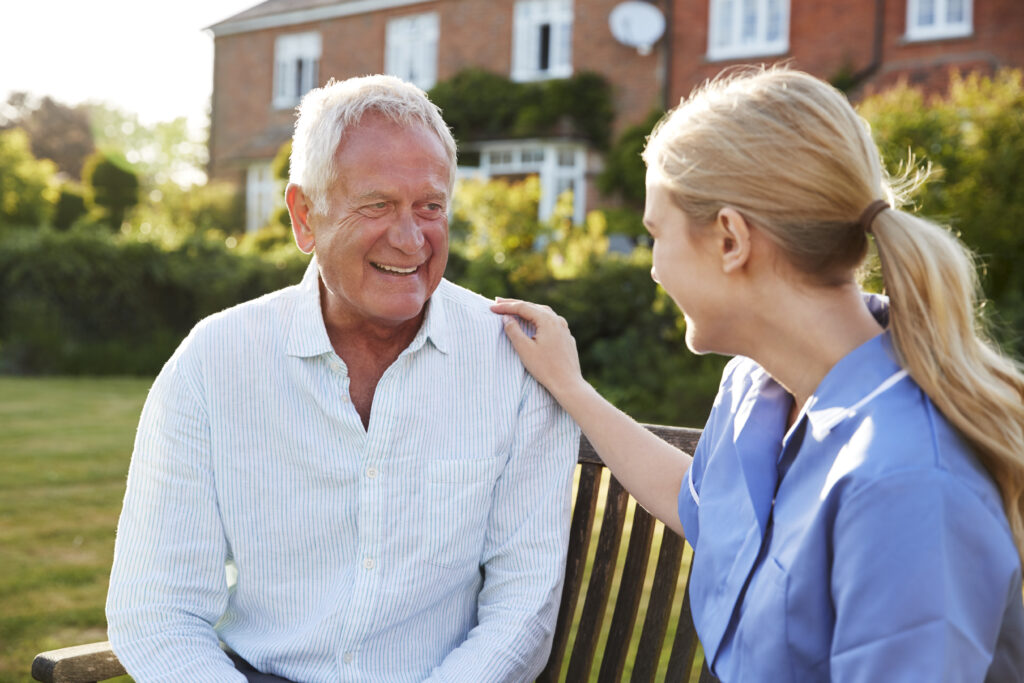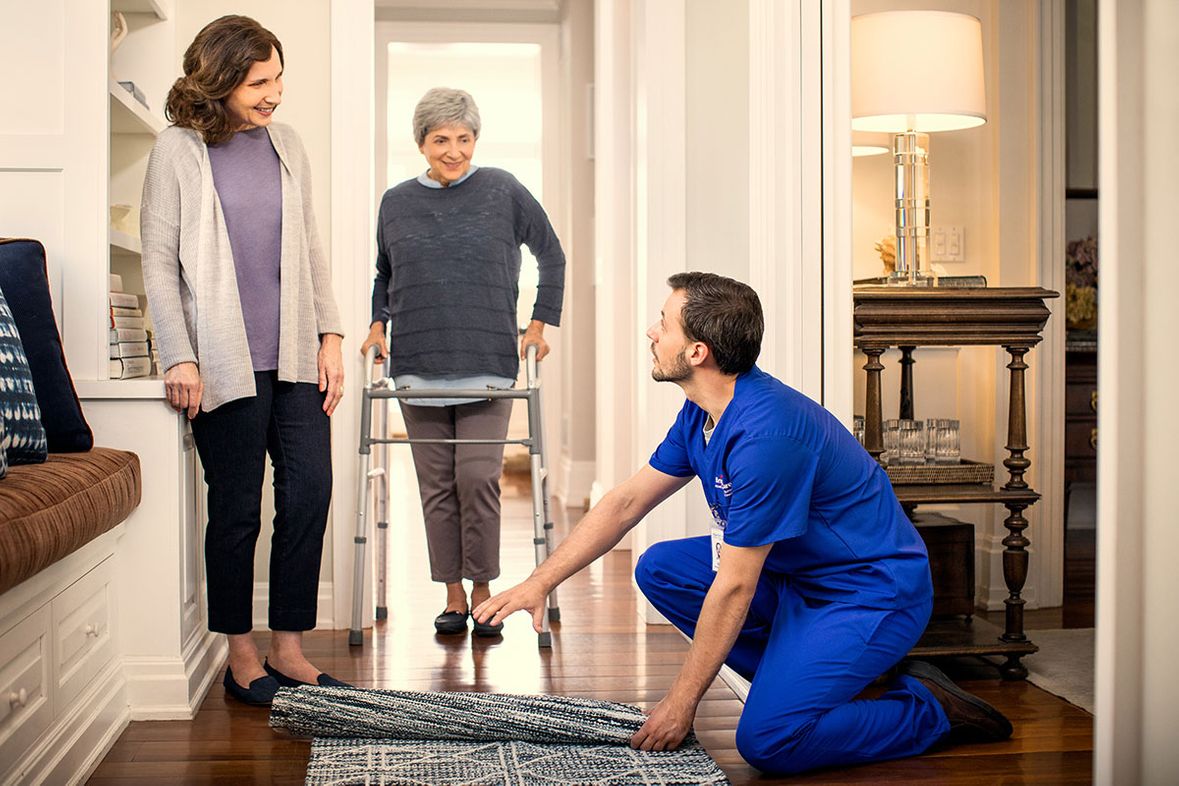Once we get older, fall prevention become crucial as recovering from a fall isn’t as easy as simply getting up and dusting ourselves off before checking our knees for bruises. Recent statistics tell us that 250,000 people over the age of 65 are treated in hospital as the result of a fall every year.
Falls are the leading cause of fatal and non-fatal injuries in that age group, and 30% of those who fall will suffer from broken bones or head injuries. Those are some frightening numbers, and a cause for concern if you have an elderly relative – especially if they live alone.
There are several different types of fall that could be experienced by an older person, and they can be categorised into three separate types.
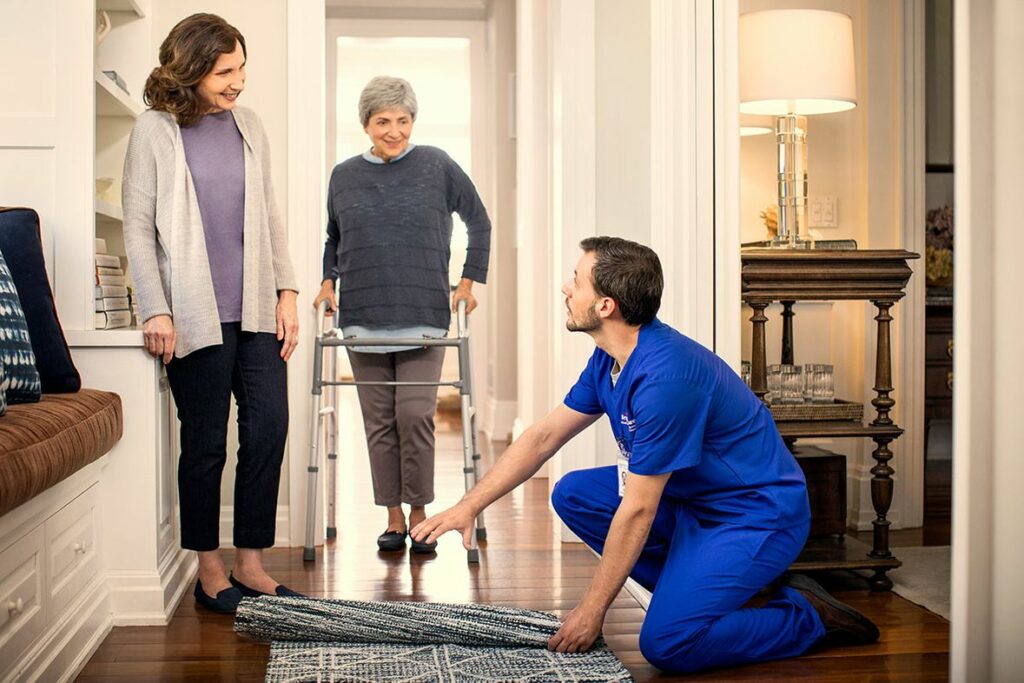
Environmental
Environmental falls, which are often the result of a cluttered living space, represent one of the most common types of falls that can be addressed through fall prevention strategies. These falls occur when hazards or obstacles in the environment contribute to an increased risk of tripping, slipping, or losing balance.
Health-based falls
Health-based falls, often triggered by chronic conditions or medication side effects, are a significant concern when it comes to fall prevention. These types of falls occur when an individual’s overall health condition or the medications they are taking contribute to an increased risk of falling.
Trigger falls
Caused by a sudden event, ie: someone pushing past in the street, or a dog pulling on a lead. Unfortunately fall prevention cannot always be used when out in public where anything could trigger a fall.
The risk of an older person falling is high due to a number of factors such as:
- Eyesight – changes in our vision as we age can play a huge part in causing a person to fall. It could prevent an elderly person from seeing trip hazards.
- Balance – Getting older can make you unsteady on your feet, and this can cause particular problems when navigating stairs or tying shoes.
- Medications – Dizziness is a common side effect with some medications and can make people susceptible to falls, however it is often overlooked.
- Chronic Health Conditions – Conditions such as Parkinson’s can cause an elderly person to fall.
- Cognitive Impairment – Dementia or Alzheimers can cause instability and balance issues, and head trauma caused by a fall can accelerate cognitive impairment.
- Lack of Safety Measures – Excessive clutter can cause a trip hazard, as can loose wiring, rugs and non-slip bath mats.
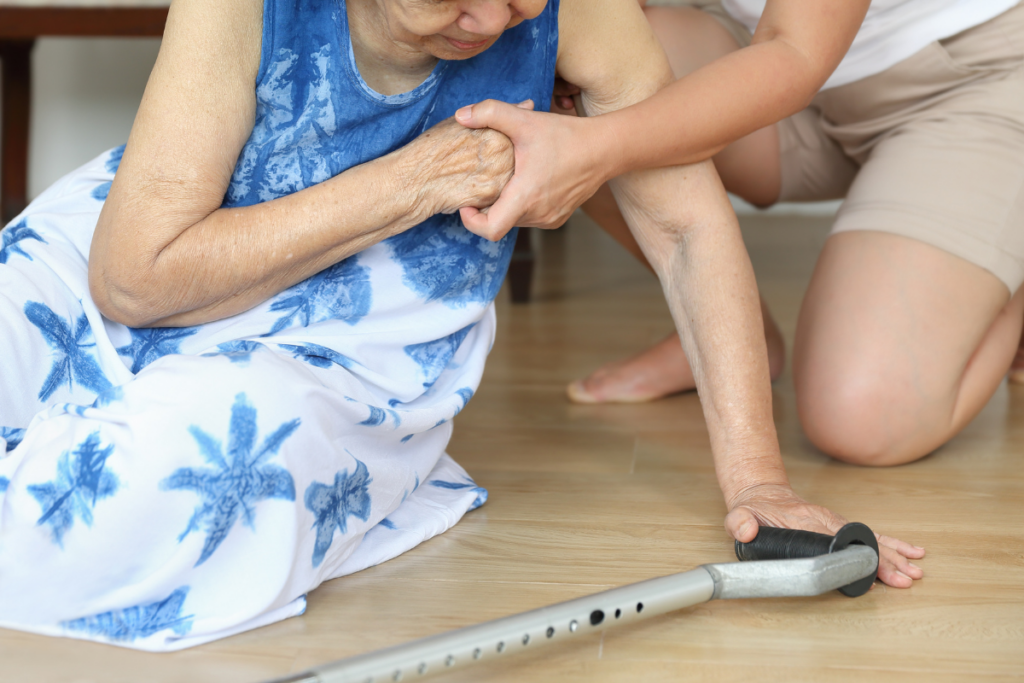
If you are the relative, friend, partner, or carer of an elderly person there are measures you can help them take that will minimise the likelihood of experiencing a fall, and help create some piece of mind for you both.
- Help to declutter their environment so it’s easy for them to move throughout their living space. Check for slippery surfaces, loose floorboards etc.
- Suggest a stability device such as a walking frame or stick if it’s an idea they are open to.
- Be aware of the side effects of medications your loved one is taking and make sure they are aware of them too.
- Discuss safety features and help them to implement some in their home, such as anti-slip mats under rugs, non-slip bath mats, safety rails and frames in the bathroom.
The older we become the more frail our body becomes , making fall prevention even more likely, and therefore easier to sustain an injury. Traumatic brain injuries are a huge risk when an elderly person falls and often the symptoms don’t present until a week or two later, so it is essential to stay vigilant. Some signs to look out for if someone recently had a fall include:
- Headache
- Nausea
- Sensitivity to light
- Memory loss
- Confusion
- Bladder incontinence
- Balance issues
Even with all the possible precautions taken, a fall could still occur so it helps to be prepared for the worst and know what to do if it happens.
What to do if an elderly person has had a fall?
- Call for medical attention immediately, even if there are no obvious signs of injury.
- Do not try to help them straight up – your instinct will probably be to try and lift their weight, instead get pillows or towels to support their joints and make them comfortable. If the fall occurs outside you could use your coat or jumper.
- Make sure the persons stays warm by covering them with a blanket or item of warm clothing. People who fall can be at risk of hypothermia.
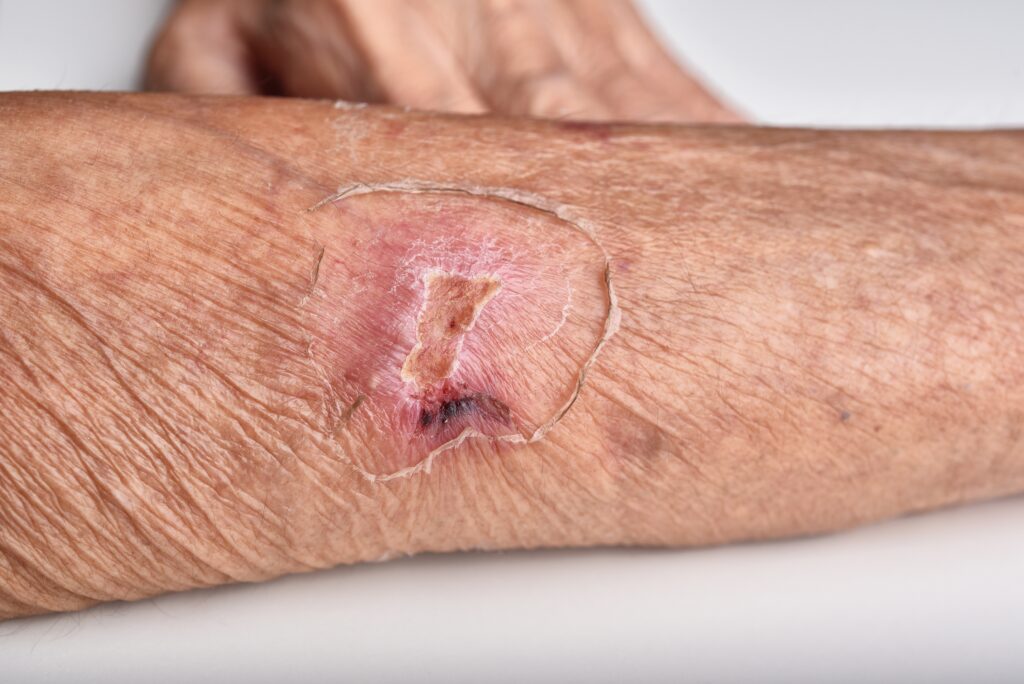
If being warm isn’t a concern and the person who has fallen feels that they can move a little, support them in continuing to make gentle movements. Staying still on one spot can cause stiffness, soreness and skin damage.
Older people long to keep their independence for as long as possible, and with a few simple measures in place they will be able to go about their daily lives with as little risk as possible. Having a plan of action in place, that you devise together, will ensure peace of mind all round.
Contact Details
For further information on how we can help with homecare for your loved one who needs some extra support or a fall prevention plan, please contact us using the free click to call button, or send an email through the form on our Contact Us page.
